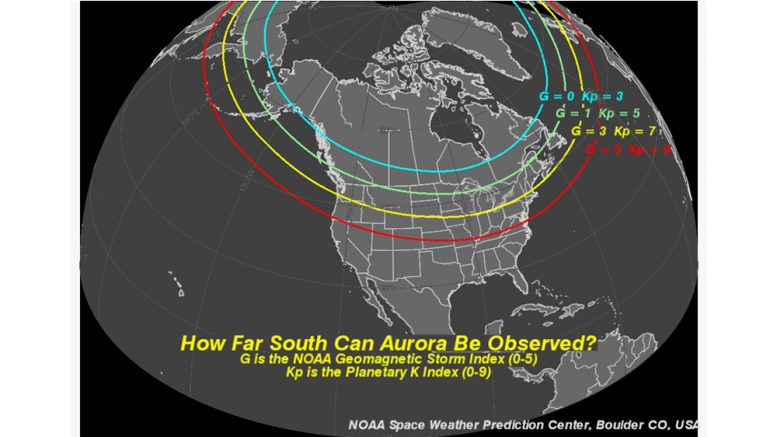By RYAN MORSE
WISH-TV | wishtv.com
The last few days have brought quite the fuss about a Thursday solar storm that would allow many in the mid-latitude states to see the northern lights. Experts say it’s not happening.
Bryan Brasher, of the Space Weather Prediction Center, says they “only anticipate the possibility of unsettled to active levels, with a slight chance of G1 storm levels, which may manifest as a faint glow visible when looking North from the states bordering Canada.”
The excitement of seeing the northern lights in over 15 states and as far south as Indiana, was overblown.
The SWPC released its three-day forecast, which only has a KP index peaking between three and four on Thursday.
So, what does that mean?
The KP index measures how far south the aurora can be observed.
Based on the map above, if Thursday’s KP values are in the three to four range, only a select few in the far northern U.S. will be able to see a faint glimmer of the lights on the horizon.
For reference, in prior solar storms, Indiana has seen the faint glow of the northern lights when the KP index has reached seven.
Coronal Mass Ejections are the direct cause of the northern lights. They take between 15 hours and four days to reach Earth.
“Although we have other measures to perhaps hint at the probability of heightened activity, we really need – with our current science – to see something happen on the sun before we can make any solid forecasts,” Brasher said.
The reason for a lot of this misguided excitement was tied to a 27-day forecast from this past weekend that highlighted a KP index forecast of six.
This is why the SWPC’s three-day forecast is the most reliable tool when predicting the northern lights.
Other forecasts outside of three days should be taken as a general guide, considering nothing has happened on the sun yet.

